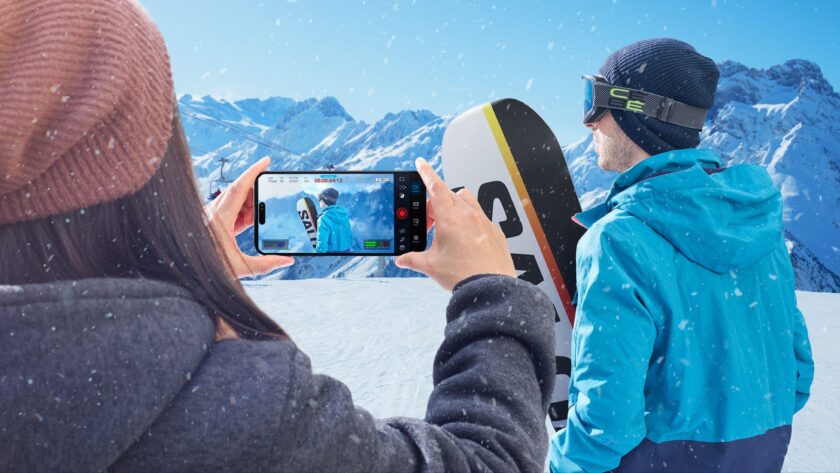Mobile phones have long outgrown their role as simple communication tools. Today, smartphones serve as recording studios, streaming platforms, and full-fledged video cameras capable of producing cinematic-quality footage. Increasingly, independent filmmakers and content creators are choosing smartphones as their primary tool for shooting short films, music videos, and even feature-length movies. But to achieve truly professional results, a phone camera alone is not enough — the right equipment and software are essential.
Why a Smartphone is Not a Compromise but a Choice
Shooting on a phone isn’t just a budget solution. Modern models — especially flagships — feature advanced cameras with multiple lenses, optical stabilization, and 4K video capabilities. Moreover, smartphones allow users to edit videos, add effects, and share the results instantly, making them ideal for creatives working “on the go.”
It’s not only about accessibility — smartphones today enable a level of spontaneity and intimacy that’s often hard to achieve with larger equipment. This is particularly valuable for documentary-style storytelling and real-time social content creation.
It’s no surprise that YouTube and other social platforms have exploded with content shot on smartphones. Some creators even use them for live broadcasts — whether it’s unboxings, interviews, or app reviews, including those covering gaming platforms and mobile entertainment. Among the latter, reviews that feature new czech online casinos, optimized for mobile browsers and apps, are becoming increasingly common. This underlines the importance of high-quality visuals and audio when filming with a smartphone — viewers don’t just want to listen; they want to see sharp, engaging content.
Equipment: What Helps Improve Picture and Sound
A smartphone can produce impressive footage, but it reaches its full potential only with the right external gear. Accessories not only enhance technical quality but also offer more creative flexibility in framing, lighting, and audio.
Lighting
Good lighting is half the success. Even the most advanced camera can’t compensate for poorly lit scenes. Videographers use LED panels with adjustable brightness and color temperature. Compact ring lights are a great option for interviews or vlogs, especially when shooting indoors.
Tripods and Stabilizers
Shaky footage is one of the fastest ways to make even great content look amateur. Stability is essential for ensuring your visuals feel smooth and immersive.
Handheld smartphone footage often looks shaky, especially when moving. That’s why stabilization is critical. A small tripod or an affordable monopod is enough for static shots. But if you’re filming on the move, a 3-axis gimbal stabilizer is the better choice. It ensures smooth, cinematic motion even when walking or panning.
Microphones
Sound is just as important as image — maybe even more. Viewers are more forgiving of slight video flaws than they are of muffled or noisy audio.
Built-in smartphone microphones rarely provide clean, crisp audio. Lavalier microphones connected via an adapter are better for dialogue and interviews. There are also wireless models compatible with most popular phones. For ambient sound, directional microphones mounted via a cold shoe holder are a great solution.
Software: Editing and Color Correction
Your visuals and sound might be top-notch, but raw footage still needs polish. That’s where the right apps come in — allowing you to turn good material into a professional-quality product.
Shooting Apps
Even if you have an iPhone or a high-end Android, the default camera app has limitations. Apps like Filmic Pro allow you to manually adjust ISO, shutter speed, focus, and white balance. They also support shooting in a logarithmic color profile (Log), which opens up full-fledged color grading possibilities.
Editing and Post-Production
Editing ties your story together — from transitions and music to subtitles and pacing. Luckily, mobile apps now offer surprising depth and precision.
You can edit video at nearly professional levels right on your smartphone. LumaFusion (for iOS) and KineMaster (Android and iOS) let you trim, splice, add transitions, and insert titles. Free options like CapCut and VN Editor are also excellent for beginners.
For color correction, you can use the mobile version of DaVinci Resolve (on tablets), or apply built-in LUT filters that mimic popular cinematic styles.
Useful Tips and Tricks
Even with great gear and apps, good results depend on your approach. A few fundamental principles go a long way in making your content look polished.
To make your video look professional, keep these basic rules in mind:
Always shoot horizontally (unless working for Instagram or TikTok).
Manually check focus, especially when working with shallow depth of field.
Avoid zooming — physically move closer instead.
Write a script and storyboard in advance — even a short clip needs planning.
Online Platforms as Creative Playgrounds
Distribution is just as important as production. Once you’ve created your film, platforms like YouTube or TikTok provide the perfect stage for reaching your audience.
Mobile filmmaking is not only a form of creativity but also a way to engage an audience. Platforms like YouTube, Instagram Reels, and even TikTok allow for immediate publishing and viewer feedback. These formats are especially popular among new creators producing reviews, gaming streams, or trend commentary — from the latest mobile apps to new czech online casinos. Interestingly, this topic is gaining traction in the Czech Republic, where mobile-friendly casinos have become a part of digital culture.
Conclusion: Your Pocket-Sized Film Studio
With the right setup and accessories, a modern smartphone can easily rival semi-professional cameras. All you need is some preparation, a creative approach, and solid editing. Most importantly, remember that great cinema doesn’t start with expensive gear — it starts with an idea and the skill to bring it to life. And today, your smartphone is fully equipped to help you do just that.



